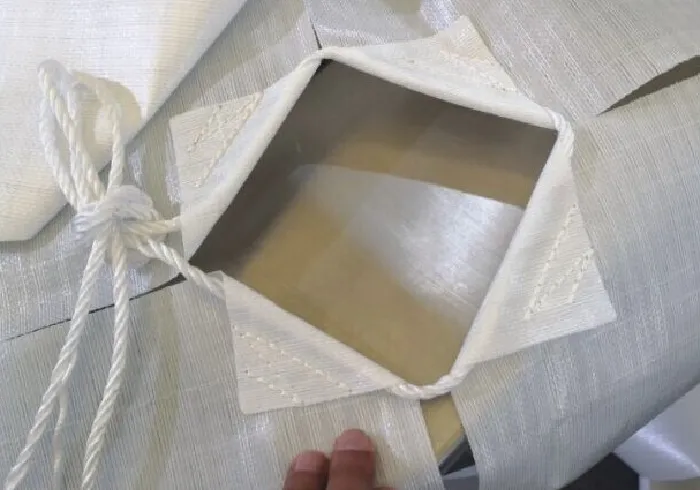fibc safety sewing
The Importance of Safety Sewing in FIBC Manufacturing
Flexible Intermediate Bulk Containers (FIBCs), commonly known as bulk bags, have become an essential component across various industries for transporting and storing dry bulk materials. They offer a multitude of advantages, such as high durability, cost-effectiveness, and ease of handling. However, the safety of these bags is paramount, and one critical aspect that contributes significantly to their overall safety is 'safety sewing.'
Understanding Safety Sewing
Safety sewing refers to the specialized techniques and high standards applied during the sewing process of FIBCs. Unlike regular sewing, safety sewing involves stringent quality checks, the use of appropriate materials, and adherence to specific industry standards. Each seam in an FIBC is crucial; it not only holds the bag together but also ensures that the contents are securely contained, preventing spills, contamination, and potential safety hazards.
The Role of Safety Sewing in FIBC Integrity
The integrity of an FIBC depends largely on the strength and reliability of its seams. When bulk bags are filled with heavy or abrasive materials, the seams experience substantial tension and stress. Poor sewing practices can lead to seam failure, resulting in catastrophic accidents, product loss, and environmental hazards. Safety sewing incorporates reinforced stitching patterns, such as a double-stitch or overlock stitch, which enhances the seam's strength and durability, thereby mitigating the risk of failure.
Materials Utilized in Safety Sewing
The materials used in safety sewing are also vital for preventing seam failure. High tenacity polypropylene (PP) yarns are commonly employed due to their strength and resistance to various environmental factors, including UV light, moisture, and chemicals. Additionally, the sewing thread should be chosen carefully; polyester threads are often preferred for their excellent abrasion resistance and low moisture absorption. The right combination of materials ensures that the FIBC can withstand the rigors of transportation and storage without compromising safety.
fibc safety sewing

Compliance with Industry Standards
To further guarantee safety, FIBC manufacturers must comply with various international safety standards. Organizations such as the American Society for Testing and Materials (ASTM) and the National Fire Protection Association (NFPA) provide guidelines that dictate best practices for the manufacturing and sewing of FIBCs. Compliance not only enhances the safety of the bulk bags but also instills trust in customers, assuring them of the quality and reliability of the products they are using.
Quality Assurance Measures
In addition to adherence to standards, effective quality assurance measures must be in place throughout the FIBC manufacturing process. This includes regular inspections of sewing equipment, training for skilled operators, and routine audits of production lines. Implementing these measures ensures that each bulk bag produced meets the highest safety standards and is free from defects that could compromise its integrity.
The Financial Implications of Safety Sewing
Investing in safety sewing may present upfront costs for manufacturers, but the long-term benefits far outweigh these initial expenses. By producing high-quality, safe FIBCs, manufacturers reduce the risk of product loss, minimize the chances of accidents, and ultimately protect their reputation in the marketplace. Additionally, companies that prioritize safety often enjoy increased customer loyalty and satisfaction, which can lead to repeat business and referrals.
Conclusion
In conclusion, safety sewing is a fundamental aspect of FIBC manufacturing that should never be overlooked. As industries continue to rely on bulk bags for their logistical needs, the focus on seam integrity, proper material selection, compliance with industry standards, and quality assurance becomes increasingly important. Both manufacturers and customers need to prioritize safety sewing practices to ensure the reliability and effectiveness of FIBCs. By doing so, they contribute to a safer working environment, reduce financial risks, and support the sustainable growth of the industry as a whole. Investing in safety sewing is not merely an operational choice; it is a commitment to excellence and responsibility in the supply chain.
-
Industrial Cylinder Arm Sewing Machine: Revolutionizing Heavy-Duty SewingNewsJul.28,2025
-
Cylinder Arm Sewing Machine: Perfect for Special Sewing ApplicationsNewsJul.28,2025
-
Cylinder Bed Sewing Machine: Essential for Sewing Complex MaterialsNewsJul.28,2025
-
Heavy Duty Sewing Machine: The Essential Tool for Industrial ApplicationsNewsJul.28,2025
-
Computerized Pattern Sewing Machine: Revolutionizing Precision StitchingNewsJul.28,2025
-
Heavy Duty Industrial Sewing Machine: Power Meets PrecisionNewsJul.28,2025
-
Leather Sewing Machine: The Industrial Standard for Tough MaterialsNewsJul.18,2025





























